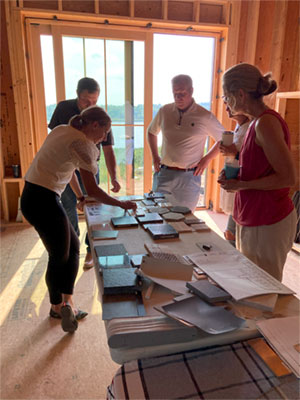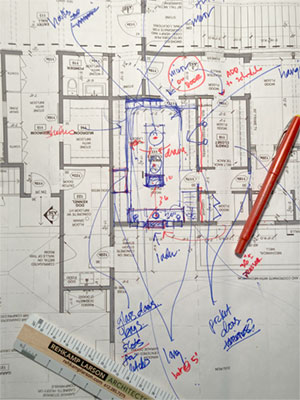THE IMPORTANCE OF ARCHITECT INVOLVEMENT THROUGHOUT THE CONSTRUCTION PROCESS
by Ryan Bicek, AIA / Senior Associate
 When will the Architecture be done? This question often comes up in one form or another once the design and construction drawings have been developed and construction approaches. It’s a misconception that the architect simply completes the drawings and then hands them off to the contractor to build without any further involvement. Construction document drawings contain a tremendous amount of useful information but can’t possibly cover every condition that will occur in a project. Continuous collaboration with the design team throughout the entire construction process is essential for a successful project.
When will the Architecture be done? This question often comes up in one form or another once the design and construction drawings have been developed and construction approaches. It’s a misconception that the architect simply completes the drawings and then hands them off to the contractor to build without any further involvement. Construction document drawings contain a tremendous amount of useful information but can’t possibly cover every condition that will occur in a project. Continuous collaboration with the design team throughout the entire construction process is essential for a successful project.
The architect fills many roles during the construction administration phase of a project. On-site construction meetings with owners, architect, and team to discuss design/construction questions and to problem-solve any issues are a typical part of this process. These on-site meetings give the owners the opportunity to react and adjust to the actual built space, allowing time to test ideas, review samples/mockups, and help the team plan for upcoming decisions needed to keep the construction moving forward. A few of the topics covered at these meetings include on-site coordination of cabinet hardware placement, tile layouts, detail development, trim alignment coordination, and walk-throughs for electrical/ lighting plumbing/HVAC.
 Another key role for the architect during construction is to keep up with decisions and supply information that the builder needs to stay on schedule. The architect is essential in answering questions regarding design intent from builder/subcontractors – in the review and follow up on shop drawings relating to floor/roof trusses, windows/doors, cabinetry, countertops, metal railings, stone, and tile layouts.
Another key role for the architect during construction is to keep up with decisions and supply information that the builder needs to stay on schedule. The architect is essential in answering questions regarding design intent from builder/subcontractors – in the review and follow up on shop drawings relating to floor/roof trusses, windows/doors, cabinetry, countertops, metal railings, stone, and tile layouts.
The most successful projects retain the entire design team through the duration of construction, as that is where the true “magic” happens. During the construction phase much refinement, discovery, and finesse occurs, and without a full collaborative approach, the project may not reach its highest potential.
